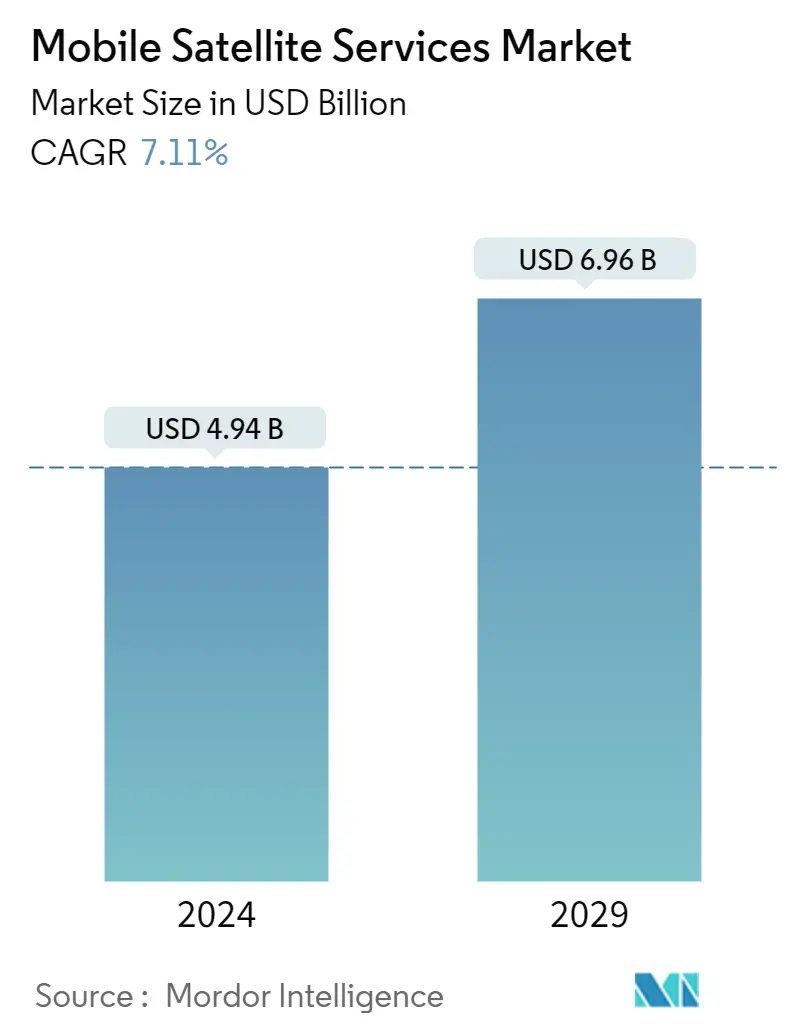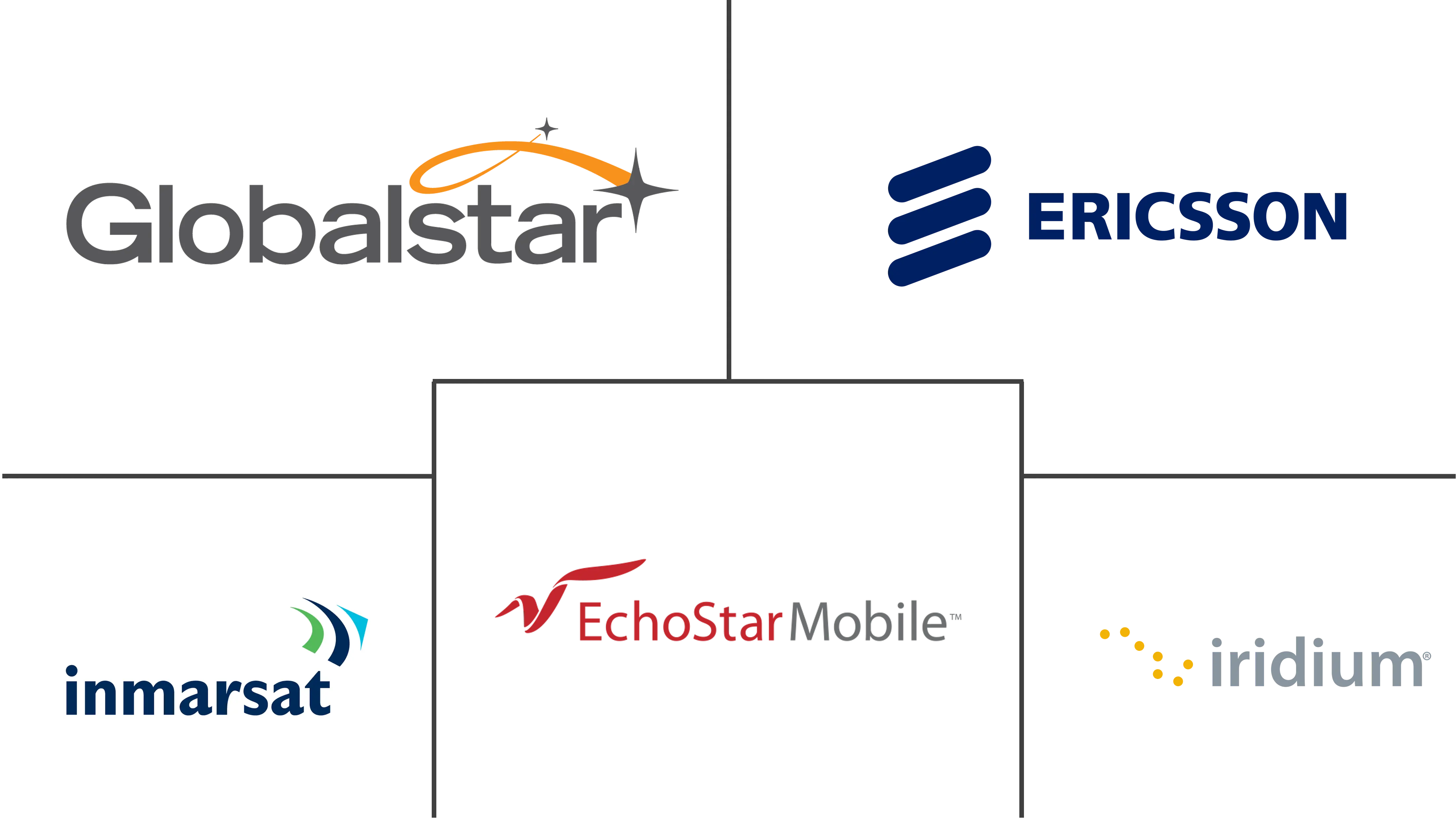Market Size of Mobile Satellite Services Industry

| Study Period | 2019 - 2029 |
| Market Size (2024) | USD 4.94 Billion |
| Market Size (2029) | USD 6.96 Billion |
| CAGR (2024 - 2029) | 7.11 % |
| Fastest Growing Market | Asia Pacific |
| Largest Market | North America |
Major Players
*Disclaimer: Major Players sorted in no particular order |
Need a report that reflects how COVID-19 has impacted this market and its growth?
Mobile Satellite Services (MSS) Market Analysis
The Mobile Satellite Services Market size is estimated at USD 4.94 billion in 2024, and is expected to reach USD 6.96 billion by 2029, growing at a CAGR of 7.11% during the forecast period (2024-2029).
The usage of satellite communication services for IoT, as well as in the disaster management areas in developed regions, is expected to boost the market studied over the forecast period.
- Mobile satellite services can find space for a wide range of applications, including telecommunication, weather prediction, navigation, military intelligence, and space exploration. Additionally, augmenting 5G mobile networks with next-generation satellite capabilities helps mobile satellite operators play a vital role in the emerging 5G ecosystem.
- Until recently, the MSS frequency bands were separate from the bands used for terrestrial cellular because the mobile user either needed a dual frequency band handset or two separate handsets. However, in the past decade, several system planners have proposed that segments of the MSS frequency bands be used for both terrestrial cellular and satellite communications so that the handsets might be simplified and the user's service is always through the same service provider.
- The terrestrial cellular network to support this mode of operation is called the ancillary terrestrial component (ATC). Although this will put additional burdens on the existing frequency allocations and require special precautions to protect GPS operations in adjacent bands, conditional approvals for the concept have already been obtained in the United States for the deployment of new integrated satellite and terrestrial networks using standard devices with form factors similar to current PCS/Cellular devices. There is a convergence between emerging wireless and mobile satellite services. Examples include the deployment of S-Band and L-Band integrated MSS networks in the United States by ICO Global Communications (DSDB recently acquired by Dish Network), TerreStar, and LightSquared.
- Interoperability is described as the ability of diverse information systems, devices, and applications to connect, in a synchronized manner, inter and intra-organizational boundaries to access, exchange, and cooperatively use the data amongst stakeholders. Data exchange architectures and standards allow relevant data to be shared effectively and securely within all applicable settings and with relevant stakeholders (including with the person whose information is being shared).
- Optimally, interoperability facilitates the connections and integrations across these communication systems to occur regardless of the data's origin or destination and ensures the data are usable and readily available to share without additional intervention by the end user. In the mobile satellite services market, the connection can happen between fixed satellite services to MSS or others as well. It requires the facilities to have interoperability; otherwise, the function may fail.
